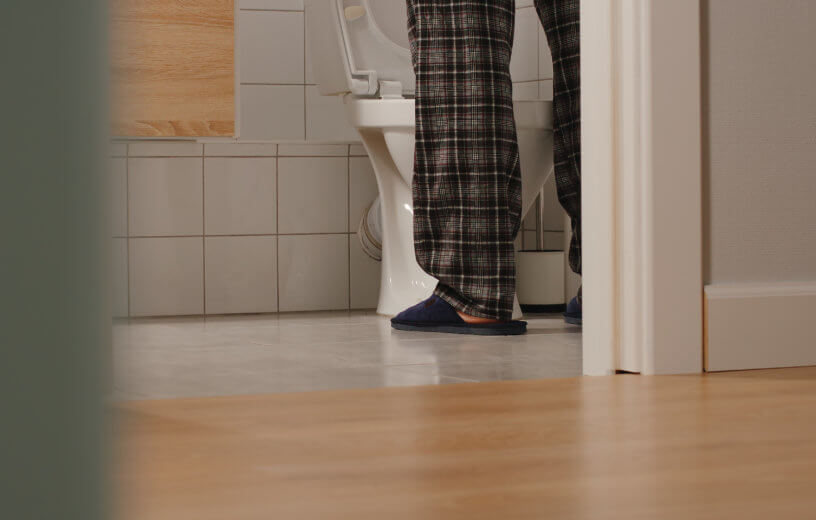MORGANTOWN, W. Va. — New research by a team at West Virginia University suggests it may be possible to turn “yellow into green” — by recycling urine. Researchers contend that waste flushed away every day is wasted and could benefit the environment all while providing valuable resources and profits.
Kevin Orner, an assistant professor at the Benjamin M. Statler College of Engineering and Mineral Resources, is currently developing a technology aimed at treating urine right on site as opposed to a remote, centralized wastewater treatment facility. Once realized, this technology could potentially sit underneath toilets, allowing for quick treatment of urine, subsequently promoting the recovery of nitrogen — a nutrient sold as a fertilizer.
Prof. Orner’s findings can make urine recycling much more feasible when it comes to integrating it into existing infrastructure and lowering the amount of nutrients entering lakes and rivers. Tons of nutrients entering bodies of water isn’t a good thing; excessive nutrient discharge can put aquatic ecosystems at risk by fostering the growth of algae that eat dissolved oxygen in the water.
What’s the ultimate goal of recycling urine?
To transform waste collection and treatment from an environmentally harmful, expensive service to an environmentally beneficial service that makes money, the researchers say.
“You have a toilet in your house and a sewer that brings the waste to a treatment plant that might be miles away,” Prof. Orner explains in a university release. “There are greenhouse gas emissions involved with constructing the sewer that’s connected to your house and for treating the waste at the plant. To prevent the nutrients from being discharged to your local river, the wastewater treatment plant typically uses energy-intensive electric blowers to convert the ammonium in wastewater to nitrate and to convert that nitrate into nitrogen gas.”
Thus, nitrogen gas re-enters the environment and no useful product appears.
Waste recycling is hardly a new concept. For example, farmers have used manure to enrich soil and urine to repel pests for a long time. Meanwhile, many processes aimed at turning feces into fertilizer have been put in place on an industrial scale. Significant infrastructure and programs for recycling human urine are already in place and operating in locations such as Nairobi, Kenya and Brattleboro, Vermont.
Personally, Prof. Orner envisions toilets that separate urine and feces, allowing each separate waste product to be collected, treated, and changed into a useful commercial product (in most cases, as agricultural fertilizer). The most viable way of accomplishing that? Prof. Orner says an approach requiring no power to operate is ideal. This urine-separating toilet’s design would separate solids from liquids, then send the urine to a nutrient recovery unit that’s either located within or attached to the toilet itself, or housed in a residential or commercial basement.
The key to making this process successful is speed
Study authors also stress that speed is of the essence when it comes to large-scale implementation. Since the average toilet typically receives several doses of urine throughout a day, the urine must be treated quickly so that it can be released into another unit, making room for the next “dose.” This is especially vital in a system that’s small enough to attach to a toilet.
By priming the collection and treatment reservoir with an inoculation of soil holding helpful microorganisms, including carbon pellets to provide a growing surface for bacteria (key to the treatment process), and using a fill-and-draw procedure whereby small quantities of treated urine are steadily removed and fresh urine is incrementally added, researchers successfully accelerated treatment. This is significant because they reduced a process that could take weeks down to a single day in just one phase of the study.
To be clear, “circular sanitation” still has a long way to go before it becomes the new normal. High-end urine-separating toilets appear almost identical to current toilets, but their price tags are much higher. Cheaper versions, meanwhile, tend to smell or necessitate users adopt new behaviors.
Underdeveloped policies regarding urine-derived fertilizer products represent yet another notable hurdle. Prof. Orner points out that most communities’ building codes don’t account for this kind of technology in their permitting guidelines.
Still, urine-separating toilets do exist today, not only in Kenya and Vermont, but from Oregon to Paris and the Netherlands. Prof. Orner has one a collaborator in Costa Rica who “is interested in taking the lessons learned from Brattleboro and applying those to Monteverde, an ecotourism community in the Cloud Forest,” he says.
“Of course, there’s the ‘ew’ factor in dealing with urine,” Orner concludes, “but, in fact, urine isn’t a waste. It has value.”
The study is published in the journal Environmental Technology.

